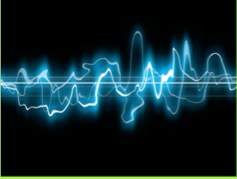Signal Flow
A Quick Note on Gain
Channel level is another important aspect of mixing, which begins to flesh itself out during the EQ’ing process. As each new element is introduced for EQ’ing, it is first imperative that you set a preliminary fader level to get the sound, more or less, tucked into your mix in terms of amplitude. To do so, simply raise the level of the new element until it is far too loud and then slowly lower its level until it naturally finds its pocket.
Gain Structure
Another thing about gain that is worth mentioning is gain structure. For those who don’t know, gain structure is basically the act of keeping your levels in such a way that you do not raise gain at one point in your signal flow only to turn it down at a later stage (e.g. set the drum bus to +5dB and the master at -1dB), or excessively raising or lowering the levels at any one point in your signal chain.
A properly set gain structure is something that is always done in analogue mixing as improperly set levels will cause noise and other problems. In the digital domain this is also true, but to a lesser and sometimes non-existent degree – especially when working in a DAW such as Logic which supports a floating-point architecture. Even so, it is a good
idea to adhere to the concept of proper gain structure as much as possible.
To do so, simply try to keep your faders as close to unity (±0) as possible without overloading the inputs of any channel strip or plugin. Be careful though, as your channel strips will usually only monitor the channel’s output by default and some parameter settings will probably need to be changed in order to monitor the signal input at any one point in the chain.
Gain structure is different from overloading the channel output (over 0dB of output), which largely needs no attention in DAWs that have a floating-point architecture. You
will not risk digital distortion in such instances on individual tracks. However, you can NEVER exceed 0 dB of output on the master out as the output becomes fixed, and clipping and its subsequent digital distortion will occur.
Feedback
Some units will give you an option for taking a portion of the flanger’s output and routing it to the input, this is the ‘feedback’ parameter. In some cases, you can also specify whether to add or subtract the feedback signal. A large amount of feedback can create a very ‘metallic’ and ‘intense’ sound. Of course, as the feedback gain approaches 1, the system can become unstable, possibly resulting in overflow or clipping.
Many people use sidechaining as a way to make their tracks pump in time with their kick drum or to lower the level of music when a voice is present, but there is so much more we can do with the process. So let’s get into it and see what can be achieved.
Using side chain based compression is a great way to make your drum parts a little more dynamic and interesting. You can also use this method to create more realistic clutch and choke effects.
Let’s say you have a running 16th high-hat pattern, this may be programmed or it could be a loop and you want to introduce some open high-hat elements to the pattern. These extra hat sounds can often get lost in an already busy sequence or loop, of course you could go through removing the closed hats manually from the original sequence to create space, but sidechaining can offer a better solution.
By using a sidechain-capable compressor on the original closed hat pattern and routing the new open hats to the key input, the closed hats ‘duck’ every time the new hat sound plays. This not only gives the open hat sound the space it deserves but also gives you a very organic sound, something that is very difficult to achieve with programming alone.
With the routing set up you should start to hear the original hat line ducking when the open hat appears. It’s now just a case of deciding how much reduction you want to occur and fine tuning the release time to match your project’s tempo.
When it comes to utilising sidechaining with drum parts, you aren’t just limited to high- hats, you can literally route any sound in your composition to any other. This can create complex dynamic relationships between the elements and give your overall mix a more cohesive feel.
Try using a snare or percussion sound for a fill or variation during a transition in your arrangement.
Then apply a side chain compressor to the rest of your drums and percussion. The new snare fill will cut right through the mix, and the effect will create an aggressive feel.
When using any effect with a tail (i.e. reverb, echo or delay) there is always a danger of muddying a good mix. There are times when a really large reverb or delay are called for and with the use of side chain compression we can generally use these larger-than- life effects, without detrimentally affecting our mix.
To use this technique we first need to set up a send / return routing. The compressor is then placed on the return channel or buss. The key input for this compressor can be any element in your mix, traditionally the kick drum or drum group would be used but things get a little more interesting if alternative sources are used.




